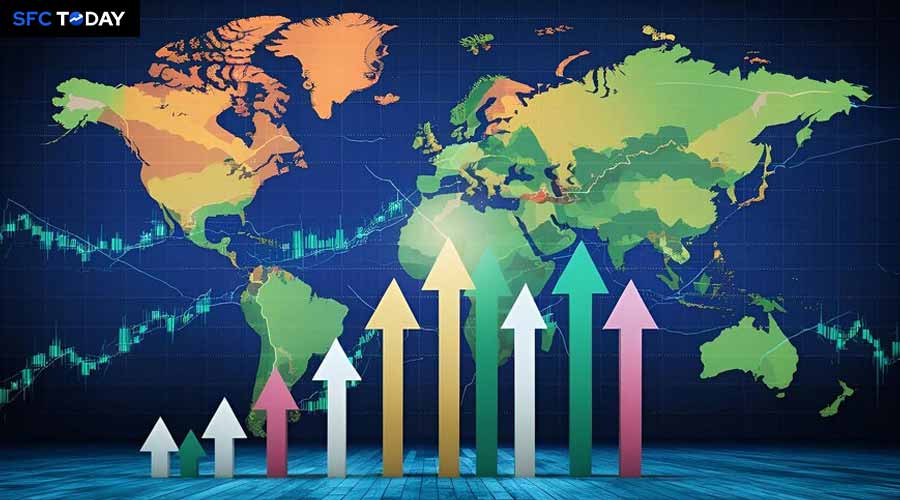The top stock exchanges around the world
The global financial landscape is dominated by several key stock exchanges, each playing a critical role in international economics, finance, and investment. These exchanges not only facilitate the buying and selling of stocks but also serve as barometers for the overall economic health of the regions they represent. This article explores the top stock exchanges around the world, focusing on their histories, key features, and the reasons they are considered central hubs for financial activities.
1. New York Stock Exchange (NYSE) – USA
Located in New York City, the NYSE is arguably the world’s most well-known stock exchange. Established in 1792, it is also among the oldest in the world. The NYSE is renowned for its large trading volume and the significant number of publicly listed companies. It boasts a market capitalization that runs into trillions of dollars, making it a pivotal market for global finance. Companies listed on the NYSE are typically large, established corporations, including household names such as Coca-Cola, Ford, and IBM.
Key Features:
Largest stock exchange in the world by market capitalization.
Hybrid model for trading, combining a floor trading environment with electronic trading.
Home to some of the largest blue-chip companies globally.
2. NASDAQ – USA
The NASDAQ (National Association of Securities Dealers Automated Quotations) is a global electronic marketplace for buying and selling securities, as well as the benchmark index for U.S. technology stocks. Founded in 1971, NASDAQ was the world’s first electronic stock market, and it is known for its high-tech threshold, hosting giants such as Apple, Amazon, Microsoft, and Google’s parent company, Alphabet.
Key Features:
Known for its large volume of trades, often exceeding those of the NYSE.
Preferred exchange for technology and internet-related stocks.
Operates entirely via electronic trading and does not have a physical trading floor.
3. London Stock Exchange (LSE) – UK
One of the oldest stock exchanges in the world, the LSE was founded in 1801. Located in the City of London, the LSE stands out as a leading global stock exchange known for its diverse international market. The LSE includes the FTSE (Financial Times Stock Exchange) 100 Index, which is a stock market index comprising 100 of the largest companies listed on the London Stock Exchange, such as British Petroleum and GlaxoSmithKline.
Key Features:
Strong focus on international markets with many foreign firms listed.
Offers a range of trading services, from equities to debt instruments and derivatives.
Strong regulatory environment enhancing investor confidence.
4. Tokyo Stock Exchange (TSE) – Japan
The Tokyo Stock Exchange, founded in 1878, is Japan’s largest stock exchange and one of the most significant in Asia in terms of market capitalization. The TSE is known for its stringent criteria for listing, making it a prestigious market for companies. The exchange hosts some of the largest Japanese companies known globally, including Toyota, Sony, and Mitsubishi.
Key Features:
Dominant stock exchange in Japan, setting the tone for Asian financial markets.
Known for stability and high liquidity.
Features the Nikkei 225 and TOPIX indexes, important benchmarks for the Japanese economy.
5. Shanghai Stock Exchange (SSE) – China
Established in 1990, the SSE is relatively young but has rapidly grown to become the world’s fourth-largest stock exchange. The SSE is characterized by the high volatility of its stocks and the large presence of retail investors as compared to institutional investors. It includes major Chinese companies such as PetroChina, the People’s Insurance Company of China, and SAIC Motor.
Key Features:
Not fully open to foreign investors due to Chinese capital account controls.
Includes A-shares and B-shares, targeting domestic and foreign investors respectively.
Known for rapid growth and significant government influence.
6. Euronext – Europe
Formed in 2000 through the merger of the Amsterdam Stock Exchange, Brussels Stock Exchange, and Paris Bourse, Euronext is the largest stock exchange in Europe. Euronext operates markets in Belgium, France, the Netherlands, Portugal, and Ireland. It is unique due to its pan-European model and the diversity of the 1,300+ companies listed on it.
Key Features:
Offers a range of services including equities, exchange-traded funds, warrants, and certificates.
Significant focus on SMEs through dedicated market segments like Euronext Growth and Euronext Access.
Utilizes a single electronic trading platform for all its transactions.
7. Hong Kong Stock Exchange (HKEX) – Hong Kong
Founded in 1891, the HKEX is the primary stock exchange in Hong Kong and has been a critical gateway for investors to access some of the biggest Chinese firms. It is known for its role in facilitating significant initial public offerings, including that of Alibaba in 2019. The exchange lists many significant companies based in mainland China and Hong Kong, like Tencent and HSBC Holdings.
Key Features:
Key entry point for Western investors into Chinese markets.
Significant volume of IPOs and robust market capitalization.
Offers a variety of securities, including shares, bonds, and warrants.
The world’s top stock exchanges are more than just marketplaces for buying and selling securities. They represent the financial heartbeat of the global economy, influencing economic trends and providing a barometer for the economic health of their respective regions. As financial technology evolves, these exchanges must adapt to changes such as the increasing influence of electronic trading platforms, cybersecurity challenges, and the integration of international markets. Their ability to innovate and adapt effectively will continue to be crucial in maintaining their positions at the forefront of the global financial system.


